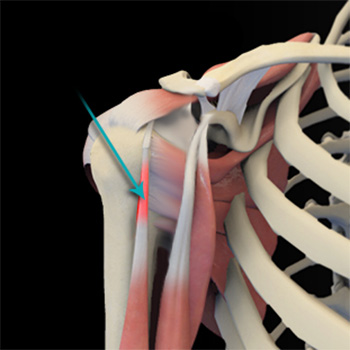- Anatomy
- Conditions
- Procedures
Shoulder Pain
Pain in the shoulder may suggest an injury, which is more common in athletes participating in sports such as swimming, tennis, pitching, and weightlifting. The injuries are caused due to the over usage or repetitive motion of the arms. In addition to pain, shoulder injuries also cause stiffness, restricted movements, difficulty in performing routine activities and popping sensation.
Rotator Cuff Tear
A rotator cuff is a group of tendons in the shoulder joint that provides support and enables a wide range of motion. A major injury to these tendons may result in rotator cuff tears. It is one of the most common causes of shoulder pain in middle-aged and older individuals.
Arthritis of the Shoulder
The term arthritis literally means inflammation of a joint but is generally used to describe any condition in which there is damage to the cartilage. Damage of the cartilage in the shoulder joint causes shoulder arthritis. Inflammation is the body's natural response to injury. The warning signs that inflammation presents are redness, swelling, heat, and pain.
Frozen Shoulder
Frozen shoulder, also called adhesive capsulitis, is a condition in which you experience pain and stiffness in your shoulder. The symptoms appear slowly, worsen gradually and usually take one to three years to resolve on their own.
Shoulder Fracture
A break in a bone that makes up the shoulder joint is called a shoulder fracture.
Shoulder Bursitis
Shoulder bursitis, also known as subacromial bursitis, is a condition characterized by pain and inflammation in the bursa of the shoulder. The bursa is a fluid-filled sac present between the bone and soft tissue that acts as a cushion and helps to reduce friction during movement.
Shoulder Tendonitis
Shoulder tendonitis is a condition characterized by inflammation of the tendons which connect the muscles to the shoulder bones. Tendonitis of the rotator cuff tendons is known as rotator cuff tendonitis. If the biceps tendon is affected, the condition is known as bicipital tendonitis.
Shoulder Impingement
Shoulder impingement is the inflammation of the tendons of the shoulder joint. It is one of the most common causes of pain in the shoulder. Shoulder impingement is also called swimmer’s shoulder, tennis shoulder or rotator cuff tendinitis.
Shoulder Instability
Shoulder instability is a chronic condition that causes frequent dislocation of the shoulder joint.
Bicep Tendon Rupture
The biceps muscle is located in the front side of your upper arm and functions to help you bend and rotate your arm. The biceps tendon is a tough band of connective fibrous tissue that attaches your biceps muscle to the bones in your shoulder on one side and the elbow on the other side. Overuse and injury can cause fraying of the biceps tendon and eventual rupture.
Acromioclavicular (AC) Joint Injuries
The acromioclavicular (AC) joint in the shoulder is very important for shoulder strength, motion, and maintaining shoulder position. The joint is stabilized by various ligaments and a capsule, which can cause pain and affect normal joint function if damaged.
SLAP Tears
The term SLAP (superior –labrum anterior-posterior) lesion or SLAP tear refers to an injury of the superior labrum of the shoulder.
Snapping Scapula
Snapping scapula or snapping scapula syndrome is also known as scapulothoracic syndrome or scapulocostal syndrome. It is a condition characterized by painful clicking, snapping, or grinding of the shoulder blade. The sound occurs as a result of rubbing of soft tissues between the thoracic wall and the scapula. The soft tissues stuck in between these two structures may be a muscle, tendon, or bursa. Snapping scapula is most commonly found in young and active individuals who are involved in repetitive overhead activities.
Shoulder Dislocation
Sports that involve overhead movements and repeated use of the shoulder at your workplace may lead to sliding of the upper arm bone from the glenoid. The dislocation might be a partial dislocation (subluxation) or a complete dislocation causing pain and shoulder joint instability. The shoulder joint often dislocates in the forward direction (anterior instability), and sometimes in the backward or downward direction.
Shoulder Ligament Injuries
Shoulder ligament injuries are injuries to the tough elastic tissues present around the shoulder that connect bones to each other and stabilize the joint. The ligaments present in the shoulder are connected to the ends of the scapula, humerus, and clavicle bones which form the shoulder complex. The extensive stretching or tearing of these ligaments from acute or chronic injuries can lead to instability in the shoulder joint.



















